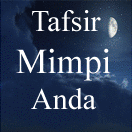In a classic 1961 work, Akiho Miyashiro recognized that many circum-Pacific orogenic
belts can be divided into two component parts. On the
oceanward side of these orogens, Miyashiro recognized that
the rocks had experienced low-temperature high-pressure
metamorphism, whereas on the continentward side, he recognized
suites of high-temperature low-pressure metamorphism.
He named these orogens paired metamorphic belts and used
his native Japan as the prime example of such a paired metamorphic
belt.
Japan is an arc-trench system that rests as a sliver of the
North American plate above the Pacific plate outboard of the
Eurasian plate. This tectonic scenario has existed since the
mid-Tertiary. From the beginning of the Phanerozoic to the
Tertiary, Japan was part of the Eurasian continental margin
and was involved in interactions between Eurasia and the
Tethys and Panthalassian Oceans. A few occurrences of middle
Paleozoic rocks are known from Japan, but the vast
majority of strata are younger than middle Paleozoic. Most
of the rocks are aligned in strongly deformed structural belts
that parallel the coast for 1,850 miles (3,000 km) and include
fossiliferous marine strata, weakly to strongly metamorphosed
pelitic to psammitic rocks, and granitic intrusions.
Since most rocks are strongly deformed in fold-thrust belt
structures, it is inferred that the more strongly metamorphosed
units have been uplifted from deeper in the arc-accretionary
wedge system, or metamorphosed near the plutons.
The complexly deformed zones are overlain by littledeformed
Mesozoic-Cenozoic non-marine to shallow-marine
basin deposits. In addition, abundant Tertiary volcanic and
volcaniclastic deposits are present along the western side of
the islands, and in the Fossa Magna in central Honshu island.
In Japan the Sanbagawa belt represents a high-pressure,
low-temperature metamorphic belt, and the adjacent Ryoke-
Abukuma belt represents a high-temperature, low-pressure
metamorphic belt. Together, these two contrasted metamorphic
belts represent Japan’s paired metamorphic belt. In
Japan Miyashiro and others have deduced that these adjacent
belts with contrasted metamorphic histories formed
during subduction of the oceanic plates beneath Japan. The
low-temperature metamorphic series forms in the trench and
immediately above the subduction zone, where the cold subducting
slab insulates overlying sediments from high mantle
temperatures as they are brought down to locally deep highpressure
conditions. These rocks then get accreted to the
overriding plate and may become exhumed and exposed at
the surface in the high-pressure low-temperature belt. It is
not uncommon to find blueschist facies rocks containing the
diagnostic mineral galucophane, formed with pressures
greater than four kilobars and temperatures of 390–840°F
(200–450°C).
The adjacent Ryoke-Abukuma belt contains low-pressure
high-temperature, as well as medium-pressure, high-temperature
metamorphic rocks. These metamorphic rocks form
near the axis of the arc in close association with subduction-
derived magmas. Since the rocks in this belt form over a considerable
crustal thickness, and are associated with many
high-temperature magmas, they were metamorphosed at a
range of pressures and generally high temperatures.
A number of other paired metamorphic belts have been
recognized throughout the world. In the western United
States, the Franciscan complex contains rocks metamorphosed
at high pressures and low temperatures, whereas
rocks in the Sierra Nevada and Klamath Mountains contain
high-temperature low-pressure metamorphic facies. Other
paired metamorphic belts are recognized in Alaska, New
Zealand, Indonesia, Chile, Jamaica, and the Alps.
See also CONVERGENT PLATE MARGIN PROCESSES; METAMORPHISM.

















Tidak ada komentar:
Posting Komentar
Catatan: Hanya anggota dari blog ini yang dapat mengirim komentar.